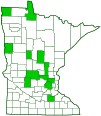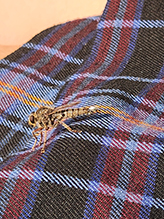false bee-killer
(Promachus bastardii)
Conservation • Description • Habitat • Ecology • Distribution • Taxonomy
|
|
||||||||||||||
Description |
False bee-killer is a large robber fly. It occurs in the United States east of the Great Plains and in adjacent Canadian provinces. It is most common in the southeastern states. It is uncommon in Minnesota. Adults are 1″ to 1¼″ in length, the females a little larger than the males. The thorax is arched and stout. The abdomen is half cylindrical, rounded on top, flat below, widest at the base, and tapering to the tip. It is black above, brown below and on the sides. On the male there is a ring of white or yellow hairs at the rear margin of each of the first four or five abdominal segments, and a pair of white hair tufts above at the tip that can be easily seen when the male is in flight. There are two large compound eyes and three small simple eyes (ocelli). The compound eyes extend above the level of the top of the head (vertex), making the head appear hollowed out between the eyes when viewed from the front. They do not meet at the top of the head on either sex. The ocelli are arranged in a triangle on a prominent rounded projection (tubercle) in the middle of the head between the compound eyes. The upper face is covered with long, erect hairs. There is a dense mustache of long stiff bristles (mystax) on the face between the compound eyes at the lower margin, and a cluster of forward-directed bristles (a “beard”) on the lower part of the face. The hairs on the upper face, the mystax, and the beard are all yellow or yellowish-white. The antennae are short and have 3 segments. The third segment is elongated but is not subdivided by rings (annulated) and does not have a long bristle (arista). The legs are stout. The last part of the leg (tarsus), corresponding to the foot, has five segments. The last segment has 2 pads. On the wing, the anal cell is longer than the second basal cell and is closed near the wing margin. |
Size |
Total length: 1″ to 1¼″ |
Similar Species |
Habitat |
|
Ecology |
Season |
|
Behavior |
They buzz loudly when flying. |
Life Cycle |
|
Larva Food |
|
Adult Food |
Bees and wasps |
Distribution |
||
|
Sources |
|
| 7/31/2025 | ||
Occurrence |
||
|
||
Taxonomy |
|
Order |
|
Suborder |
Brachycera |
Infraorder |
Orthorrhapha |
Superfamily |
Asiloidea |
Family |
|
Subfamily |
Asilinae |
Tribe |
Apocleini |
Genus |
Promachus (giant robber flies) |
Subordinate Taxa |
|
|
|
Synonyms |
|
Asilus laevinus Asilus ultimus Promachus philadelphicus Trupanea bastardii Trupanea rubiginis |
|
Common Names |
|
false bee-killer |
|
Glossary
Mystax
On flies, especially in the family Asilidae, a patch of bristles or hairs (mustache) immediately above the mouth.
Ocellus
Simple eye; an eye with a single lens. Plural: ocelli.
Tarsus
On insects, the last two to five subdivisions of the leg, attached to the tibia; the foot. On spiders, the last segment of the leg. Plural: tarsi.
Visitor Photos |
||
Share your photo of this insect. |
||
This button not working for you? |
||
A. Houde |
||
limits of Brainerd. Sitting on my lap to scope out next meal |
||
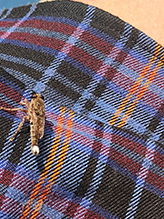 |
||
Jillian Meisel |
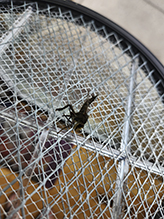 |
Lori Orrben |
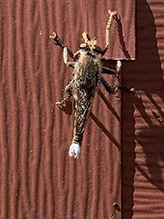 |
Lindsay Freeland |
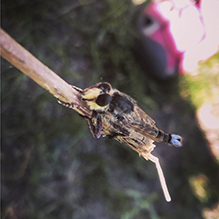 |
the kids found it. Appeared to have an injured wing. |
MinnesotaSeasons.com Photos |
||
|
||
|
||

Slideshows |
|

Visitor Videos |
||
Share your video of this insect. |
||
This button not working for you? |
||
|
Other Videos |
||
Giant Robber Fly - Promachus Bastardii |
About
Jan 21, 2015 Giant Robber Fly - Promachus Bastardii |

Visitor Sightings |
||
Report a sighting of this insect. |
||
This button not working for you? |
||
A. Houde |
Location: Crow Wing County limits of Brainerd. Sitting on my lap to scope out next meal |
 |
| Jillian Meisel 6/25/2023 |
Location: Blaine, Mn |
 |
| Lori Orrben 6/22/2021 |
Location: Spring Lake Park in Anoka County |
 |
| Lindsay Freeland 7/27/2020 |
Location: New London, MN the kids found it. Appeared to have an injured wing. |
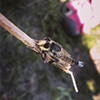 |
MinnesotaSeasons.com Sightings |
||
|

Created: 8/23/2020 Last Updated: © MinnesotaSeasons.com. All rights reserved. |
